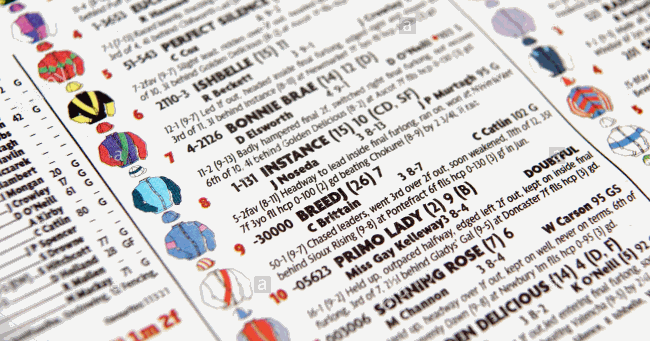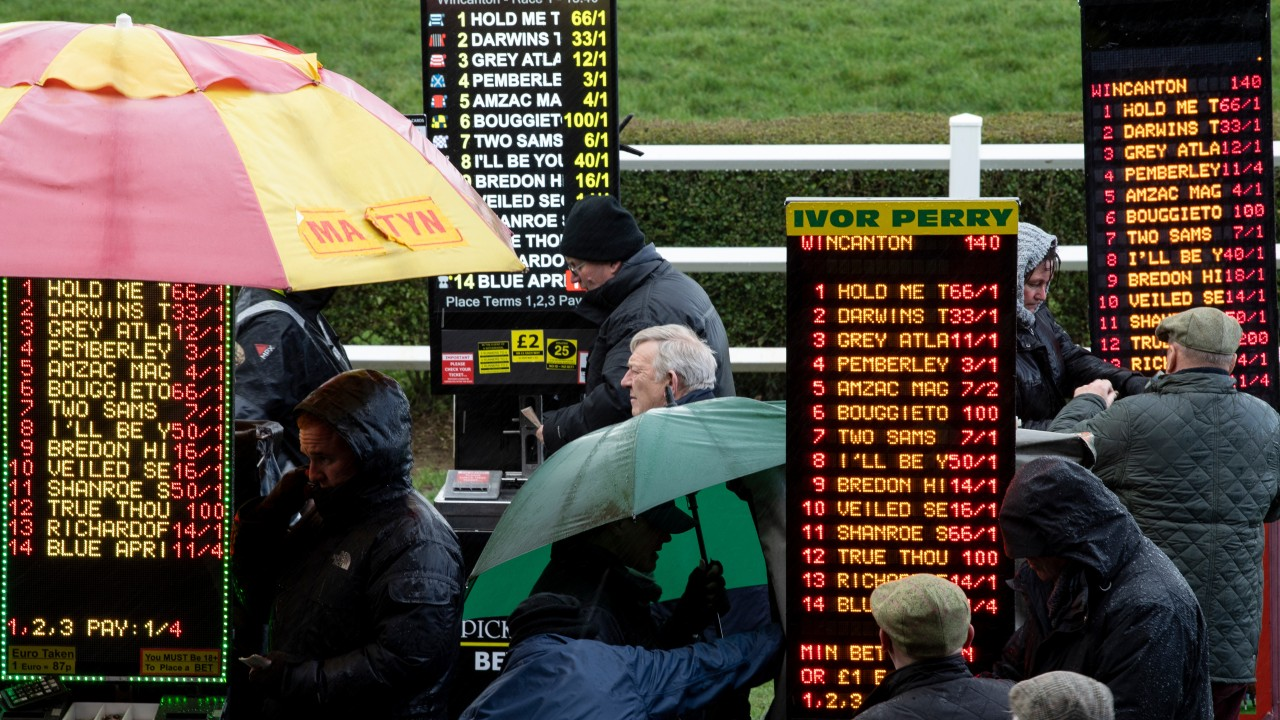If you are a casual gambler and glance at the racecard before striking a bet, preferring to bet on the horse whose jockey is wearing your favourite colour silks, then reading and analysing a racecard is not something the amateur will do.
However, if you enjoy studying form, analysing whether the Conditions of a particular race advantage a horse or slowly coming back to form after a lengthy layoff, then knowing what the letters in a racecard means would be worth taking the time to understand.
What do Letters Mean in Horse Racing Form – Form figures are the series of numbers and lettersthat appear to the left of each horse’s name on a racecard. Whether the race card is printed in a small booklet or programme, as it is on the racecourse, or in a daily newspaper or displayed online, the form figures provide an at-a-glance snapshot of how a horse has performed in its recent races.

The Past Form of a Horse is Key
The form is a record of a horse’s performance in past races, and it is often regarded as a good predictor of a horse’s future success. By comparing horses’ forms, you should be able to predict who would perform best in a race.
It is often shown on the race card as a line of numbers representing finishing positions or abbreviations. The order of the races is from left to right, with the oldest races on the left and the most current on the right.
What do the Numbers on a Racecard Signify on the Flat
The numbers 1-9 represent the horse’s finish place in the race.
The number 0 denotes that the horse finished outside of the top nine.
The sign — distinguishes between racing seasons. The numbers before the – are from the previous season.
The sign / denotes a more significant gap, such as if the horse missed an entire racing season.
The letters P or PU indicate that the horse was pulled up by the jockey and did not finish the race.
What do the Numbers on a Racecard Signify over the Jumps
The letter F denotes that the horse fell.
The letter R denotes a horse’s refusal.
BD denotes that the horse was knocked down by another runner.
The letter U or UR denotes that the horse unseat its rider.
You may also see the following abbreviations:
C denotes that a horse has previously won on that course.
D denotes that a horse has previously won at that distance.
CD denotes a horse’s victory over course and distance.
The abbreviation BF refers to a horse that was a favourite in a race but did not win (a Beaten Favourite).
Explanation of Racecard Symbols (Letter and Numbers)
Understanding the different numbers and letters next to a horse’s name on a race card is the first step in reading horse racing form. But it understands what to do with those numbers that will help you identify winners and earn from horse racing betting.
The Numbers Next To A Horse’s Name
You’ll often notice a series of digits next to a horse’s name: 05/472-1. The numbers are just the horse’s form or the places it finished in its races, with the number farthest to the right being the horse’s most recent race. These numbers imply that the horse won its most recent race after finishing second, seventh, fourth, and fifth in its previous four. The 0 indicates that it finished tenth or below in that particular race.
A dash in the horse’s form also indicates that the three previous races occurred in the previous season. The / before that indicates that the runs before that occurred two seasons ago. More /s in the form indicates that you’re going back one season for each /.
On a race card, other numbers include the number of days since a horse last raced and a rating value granted to the horse by the official British Horse Racing handicapper. You could see a rating of 98, for example. These numbers aren’t always in the same place on the racecards, but they’re usually displayed in the Form Analysis Section.
More Letters – A Brief Understanding
Several letters may exist in a horse’s Form Study.
D = Disqualified – The horse was disqualified due to an irregularity in the running of the race.
C = Carried Out – This typically happens when the horses enter the final straight running up to the finishing post, and a horse is moved off a straight line by another horse not running on a straight course.
F = Fell – This typically applies to Jump Racing when a horse does not negotiate a hurdle correctly and dislodges its jockey, therefore not completing the course and the race.
L = Left At The Beginning – When the horse is racing on the flat, the starting stalls open, and the horse does not jump on terms with the rest of the field. The horse will either lose lengths at the start or stand in the stalls and not want to run.
P = Pulled Up – This could happen on either the flat or the jumps, where a horse, for various reasons, stops racing, and the jockey will not persevere with this horse during the race and will allow the horse to race to the finish in a canter or stop riding the horse altogether and get off. The horse will then just be led to the unsaddling enclosure, where the Vet will examine it on course.
Abbreviated Form – Desert Crown – Ante-Post Favourite for the Epsom Derby

Above are the two runs of the Epsom Derby favourite Desert Crown. His first run was on November 3rd at Nottingham racetrack in the UK as a two-year-old, winning a Maiden Stakes over 1 mile 75 yards. In an 11 horse field, he beat Schmilsson in soft, going by a very impressive five lengths. He was ridden to victory by Richard Kingscote and was relatively friendless in the market at a starting price of 12/1.
In his second run, he jumped up in class running in the Al Basti Equiworld Dubai Dante Stakes (Group 2) (Class 1) at York Racecourse on May 12th 2022. He won again to preserve his unbeaten record at 7/2, beating Royal Patronage by just over three lengths over the one mile two furlong distance. After languishing mid-pack during the early stages of the race, Kingscote eased him wide entering the straight to give him daylight, and he stretched away impressively.
The summary of Desert Crown’s two runs was just an encapsulation of what the form book, and a little bit of form investigation, can give the punter who wants to learn more than just what the letters in the form book mean.
Despite taking another step up in class, Desert Crown does look like a worthy ante-post favourite for the richest race on the UK calendar, the iconic Epsom Derby. Time will tell whether this extra step up in class will not be a problem for a horse who could become a superstar in the future.

